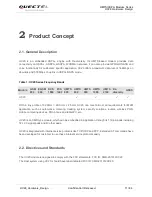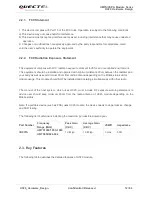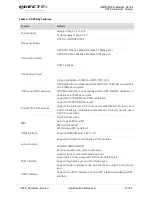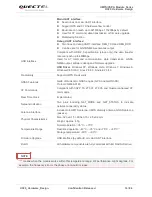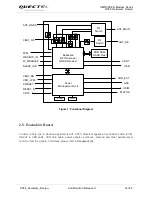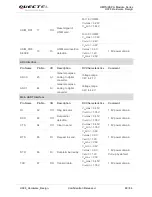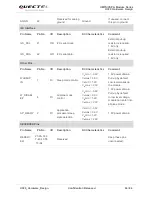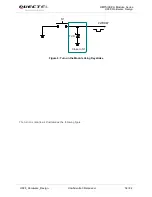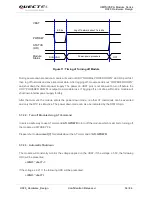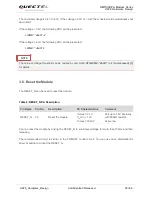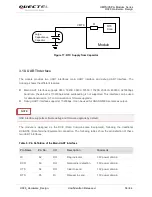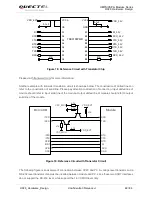
UMTS/HSPA Module Series
UC20 Hardware Design
UC20_Hardware_Design Confidential / Released 25 / 84
3.4. Operating Modes
The table below briefly summarizes the various operating modes referred to in the following chapters.
Table 5: Overview of Operating Modes
Mode
Details
Normal Operation
UMTS Idle
Software is active. The module has registered to the UMTS
network and the module is ready to send and receive data.
UMTS
Talk/Data
UMTS connection is ongoing. In this mode, the power
consumption is decided by network setting (e.g. TPC pattern) and
data transfer rate.
HSPA Idle
Software is active. The module has registered to the HSPA
network and the module is ready to send and receive data.
HSPA Data
HSPA data transfer is ongoing. In this mode, the power
consumption is decided by network setting (e.g. TPC pattern) and
data transfer rate.
Minimum
Functionality
Mode
AT+CFUN
command can set the module entering into a minimum functionality mode
without removing the power supply. In this case, both RF function and USIM card will
be invalid.
Airplane Mode
AT+CFUN
command and W_DISABLE# pin can set the module entering into
airplane mode. In this case, RF function will be invalid.
Sleep Mode
In this mode, the current consumption of the module will be reduced to the minimal
level. During this mode, the module can still receive paging message, SMS and voice
call from the network normally.
Power Down
Mode
In this mode, the power management unit shuts down the power supply. Only the
power supply for RTC remains. Software is not active. The serial interface is not
accessible. Operating voltage (connected to VBAT_RF and VBAT_BB) remains
applied.
3.5. Power Saving
3.5.1. Sleep Mode
UC20 is able to reduce its current consumption to a minimum value during the sleep mode. The following
section describes UC20’s power saving procedure.

